[Editor’s Note: This is a bonus post from Jochen about a topic not usually covered on 10,000 Birds. And if you agree with his crackpot theories we would like you to step slowly into the waiting straitjacket and await the folks who will be taking you away.]
High fog may be dull, but it is not without possibilities. Most of all, it can be a good opportunity for directly observing the sun without the need of filters or the dire consequence of having to do your birding by ear, and ear only, for a very long time (serious warning at the bottom of this post!*).
The last few days have been particularly good for sun-gazing here in Germany, and I have captured a few images for your valued entertainment.
The following image was taken in central Germany on November 9th at 13:00 under ideal fog conditions, and I was surprised at how many sunspots there currently are on the sun’s surface.
Sunspots are areas on the visible surface of the sun (photosphere) that appear visibly dark. This effect is caused by them being considerable cooler – well, less extremely hot – than the surrounding “normal” surface of the sun because of locally increased magnetic activity which inhibits convection. Wikipedia has more than you ever thought was possible to know about sunspots, but I must say that the article in the German Wikipedia is better – for those who can understand it.
Here is a close-up of the largest spot, in the upper right area of the sun. This looks like a Type C spot, with a dark core (umbra) and its lighter surroundings (penumbra) where surface temperatures of the sun are 4,000°C and 5,000-5,500C respectively, compared to the normal 6,000°C surface temperature.
The following image was photographed in the late afternoon two days prior to the image above. You can see how the sunspots have shifted their position through the sun’s rotation.
.
This is what science tells us about sunspots, but you know … science tells sells us lots of things. Now, if we take a more thorough look at the images and the sunspots over a cup of tea and apply some common-sense conservative thinking, we come to quite a different conclusion: the spots are a sign revealing the year of Judgement Day.
This is how I see it: spots occur mostly during puberty, and the sun is thus in a relatively young state of her development. Now everybody knows that the earth – and thus the universe – was created around 6,000 years ago. Taking into consideration the average life span of a human (80 years, more or less) and applying the same to the sun’s life span, the End of Days will be upon us sometime in the year 50,011.
Hey, Maya, stuff that in your pipes and smoke it!
*This is what Wikipedia has to say about sunspot observation by amateurs (extracts, highlights are mine):
“Since looking directly at the Sun with the naked eye permanently damages vision, amateur observation of sunspots is generally conducted indirectly using projected images, or directly through protective filters.”
“Direct observation of the Sun’s surface through an optical device is inherently dangerous, and requires both knowledge and close attention to safety precautions.”
When trying to take photos of the sun through fog, I always monitor the reliability of the fog for a while. How quickly does it change its density? How bright is the sun at times when fog cover is low? etc., etc.
Only when I am satisfied that the light intensity is low enough over a reliably long-enough period do I take a picture, and I take it quickly: camera up, aim & fire, camera down.
The images were shot with a 400 mm lens. Exposure was done manually. I always choose the fastest shutter speed (1/4,000th with my camera) and then play with the aperture, starting with 32 and gradually opening it until I am satisfied with the brightness and contrast of the picture.

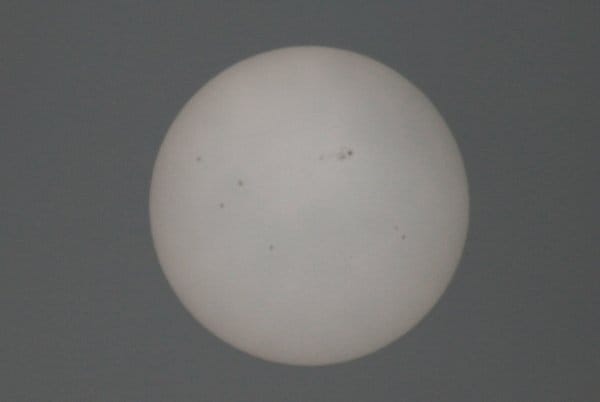
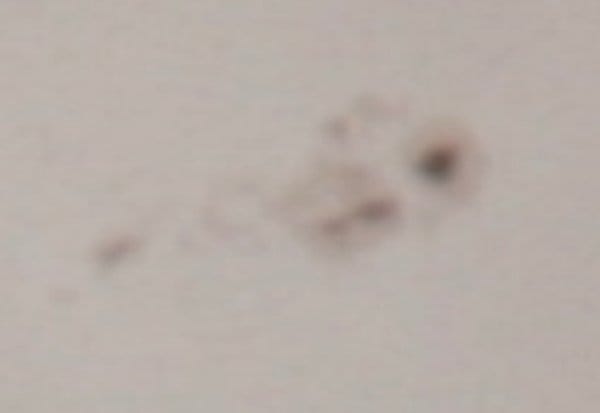
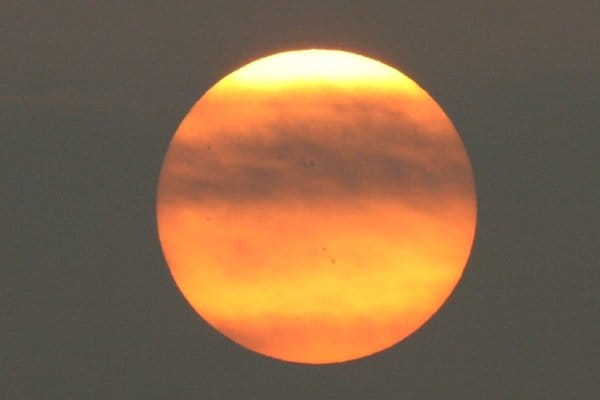
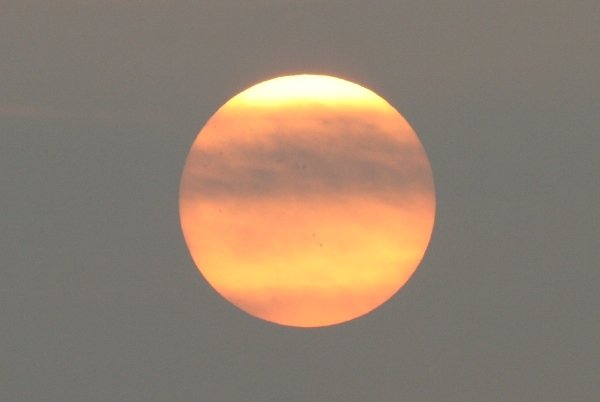
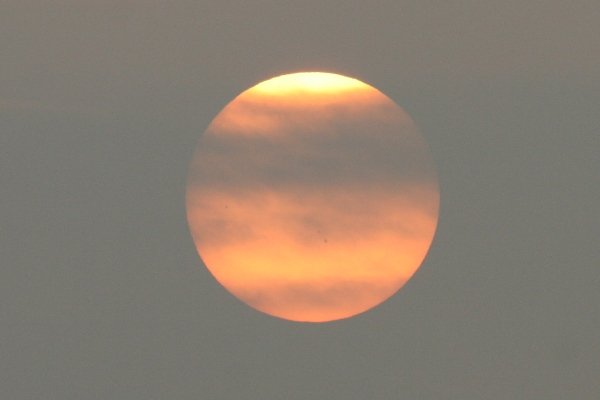
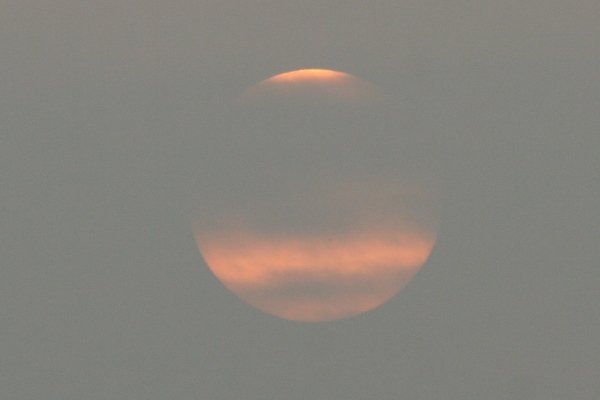
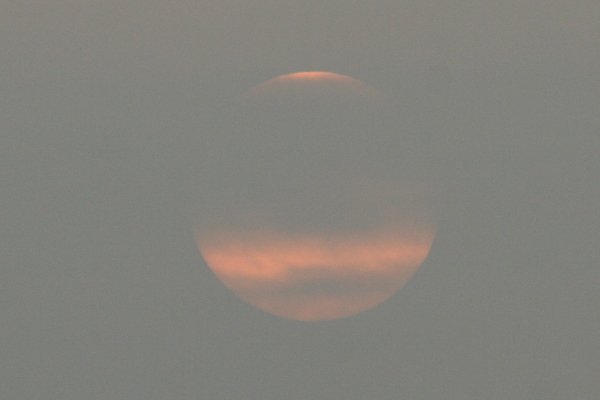









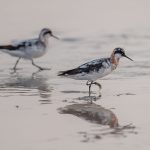
Jochen, Clever theories. Love the images. I guess I never really though of trying to capture sun spots. It seems like something you would need some very high tech instruments for. It is an amazing sight. Thanks for the great science lesson and interesting images.
Kimberli, what theories? This is FACT, and now I am just waiting for all the donations to retire to the Seychelles. 🙂
The chance to photograph sunspots without sophisticated technical equipment or risking blindness is very rare indeed, and to have a camera at hand when conditions are right is even more rare. I really felt lucky to get these images. Glad you enjoyed them, but please promise to be careful should you try and photograph the sun yourself.
At the age of almost 50, I am still getting spots, but I put that down to a diet of carrot cake and marshmallows rather than the late onset of puberty.
Have you considered the correlation between diet and complexion? All that Hydrogen is bound to play havoc with your pores, not to mention the solar wind.
Could your prediction of Armageddon be deferred in these circumstances?
Sssssssh! You get 25% of donations, okay? That’ll be enough for you to retire to a Dead Sea ressort in Jordan or Israel to takecare of your skin problems.